It’s no secret that restless children often need a little extra stimulation. It can be hard to find activities inside the house for them, but luckily there are many ways you can get your children moving outside. The solution to your child’s hyperactive behaviour is a change of scenery. Get some fresh air and adventure by taking them outside. Not only will it give their little legs the exercise they need, but nature has so many things for children to learn about.
Worried that you’re running out of new ideas, let alone engaging in outdoor activities for children? Well, fret not, in this article you will get the perfect set of ideas to hit the ground running immediately. Some of the outdoors learning ideas listed below have been made by Teachers and Early Years Educators at Premier Lodge Day Nursery in Sidcup, not only to be exciting but also educational. As one of the best nurseries in Sidcup, our early years professionals are fully committed to nurturing the growth of children.
So let’s round them up, bundle them together and head outside to indulge them in some amazing outdoor learning activities.
1) Making Mud Pies
Making mud pies is a childhood sensory activity not to be missed. The sticky feeling of mud squishing between your hands as you mould it into a pie is not only fun but therapeutic. Making pies out of dirt and water comes naturally to most children, so give them some space with room for digging in their backyard or at a park where there’s already wet ground.
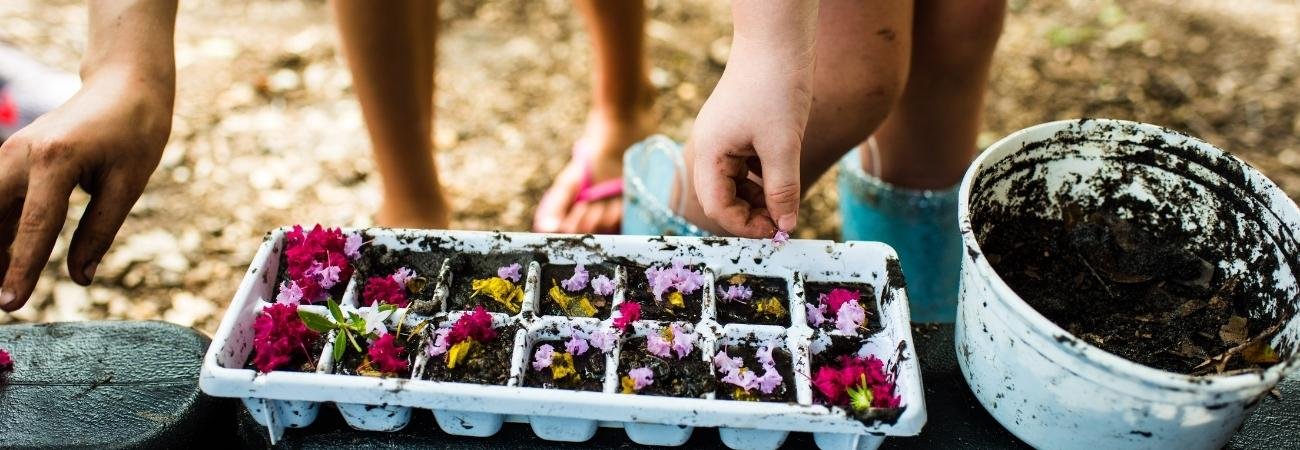
How to make this work:
Go on a nature hunt to harvest the freshest flowers, rocks, sticks and shells for your mud pie creations. Children will enjoy decorating their pies with anything they find outside that’s colorful. Let your children be the ones to mix dirt and water with their hands to create shapes and sculptures. The best part is when you see their faces light up so brightly because of how proud they feel for creating something all by themselves.
How does it add to their learning curve:
Mud pie making is a sensory activity that not only provides children with valuable tactile input but encourages imaginative play and offers you an opportunity to bond while teaching them about creative thinking and problem-solving skills.
2) Texture scavenger hunt
The texture scavenger hunt is a great way to inspire children both young and old to explore their surroundings and examine objects closely for clues or unique textures. It’s also an excellent opportunity for parents and educators as they can engage with children in the process of discovery. It can be conducted in small groups and your children will enjoy observing and think about objects differently. The best part? There’s some nice vocabulary involved that might make the experience even more fun for them.
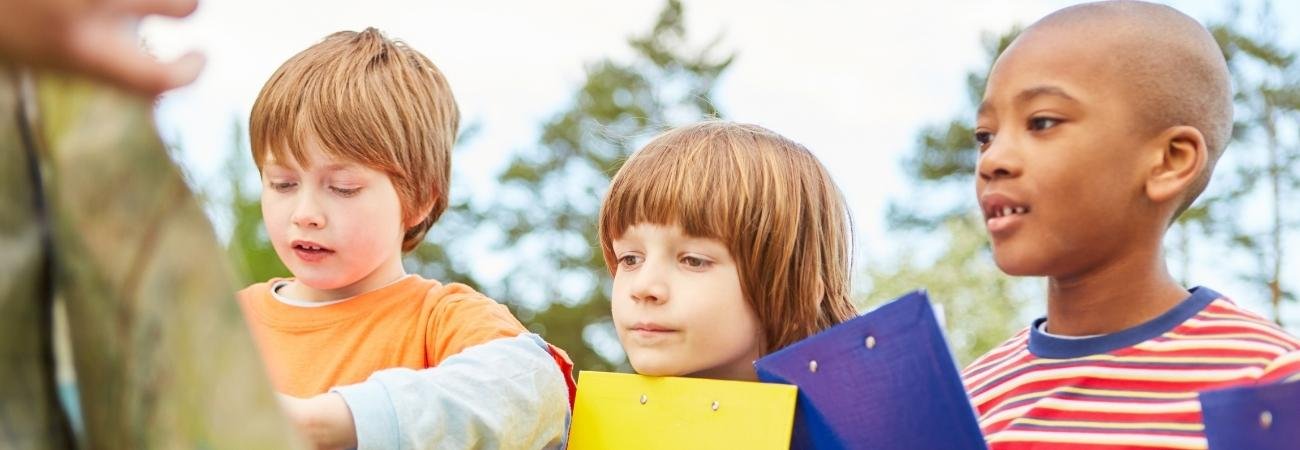
How to make this work:
Place a few different textured objects in brown lunch bags. Inside one, you could put pinecones, inside another sticks and stones. Close your eyes and feel each object before taking them outside to find similar textures when they start feeling around with their hands for something that matches what was felt previously.
How does it add to their learning curve:
You’ll be able to teach your little ones new words and expand their vocabulary while teaching them about the different textures by making this craft. Smooth, bumpy, crinkly- there are so many choices for what type of texture your children will enjoy exploring in detail as they learn through play.
3) Skipping Stones
Skipping stones is an art that requires proficiency in throwing a flat stone across the water, bouncing off of it, and making as many skips possible before finally sinking.
The perfect spot is usually found near bodies of still, calm waters like lakes and ponds where the surface is mostly level so you won’t have to worry about waves coming in from any direction while trying to teach children to skip stones across its flat surface.

How to make this work:
The goal is to skip stones across the water, but unlike skipping a stone on land where you throw it vertically and have just one chance to make contact with the surface of your target’s body before gravity pulls it down. The stone should be thrown with a slightly angled spin in order for you to make an impact on the body of water and create that good old-fashioned rock bounce across its surface.
How does it add to their learning curve:
The art of stone skipping is a fun and creative way to promote maths skills. Invite children to count how many times they can skip the stone or rock across the water before it sinks, but also give them an extra challenge like counting by 2s or adding up all their skips on paper. You can also play against each other to see who wins
4) Volleyball with an inflatable beach ball
Volleyball may seem like just another ball game, but it has unique features that help keep things interesting. It is a great way for children of all ages and abilities to stay active. This game promotes healthy competition while also providing an excellent outlet for socialisation with other players on the court. Your children will enjoy the different skills required, it’s easy on all muscle groups, and they don’t need much space!
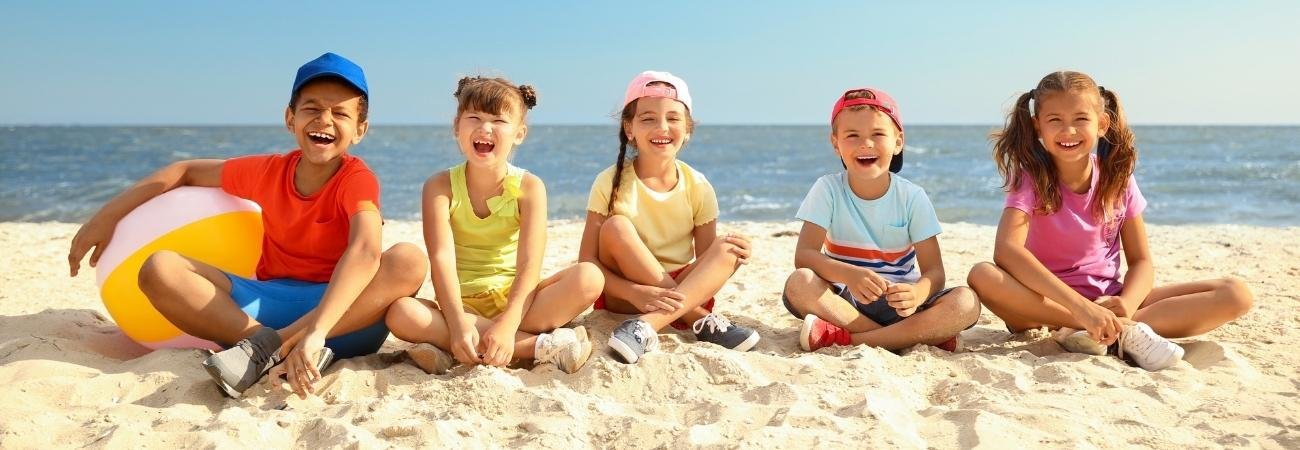
How to make this work:
You can have a game of catch with your children if they’re too young for an organized team sport. Challenge them to see who can clap the most times in between catching it. Throwing the ball high in the air is a great way for children to get exercise. Throw it up and clap before catching! For children who have difficulty gripping, deflate their balls just enough so they can still grip them with ease.
How does it add to their learning curve:
Social interaction skills and counting are better than ever with this game. The skills that you will learn from this game are invaluable. Catching a ball using both hands teaches an important skill called bilateral integration, which in turn will help children perform tasks such as buttoning shirts and tying shoes without any help.
5) Gardening skills
When teaching young children gardening skills, it is best to allow them the opportunity to watch an adult. When possible, let children help out with gardening tasks so they can have a hands-on experience. It’s also worth remembering that young ones are naturally imitative creatures and will likely be copying your every move in order for their little minds not to miss any of the important steps along the way.
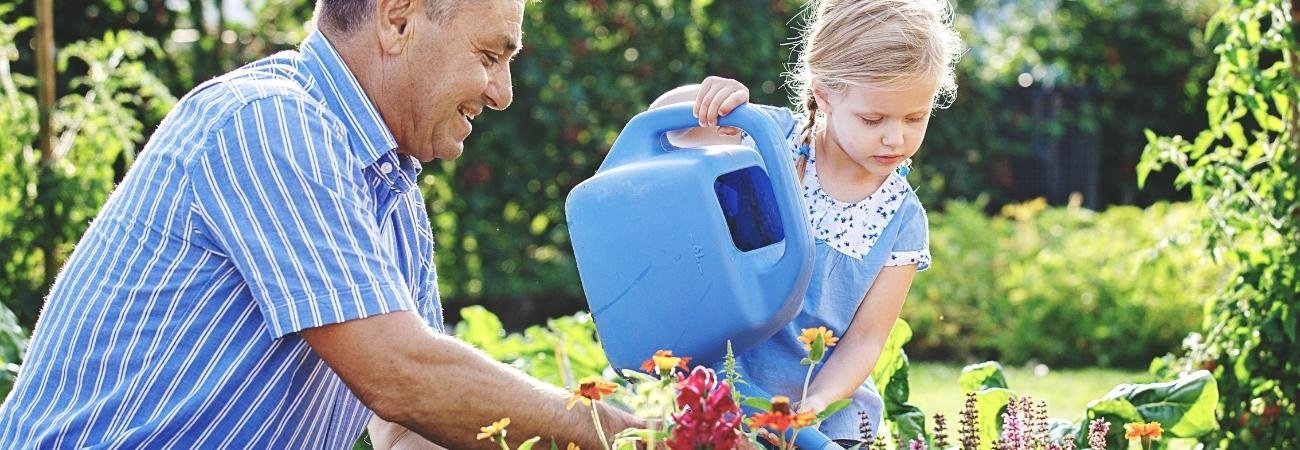
How to make this work:
Visit the local nursery, where you’ll find everything for your organic gardening needs. From containers to seeds, they will have a variety of options that will ensure success in any garden bed or container. The instructions that come with your flowers will give you the exact digging depth. They also include information about planting time, water and sun requirements for each type of flower. Let your children watch you work and invite them to help. If they want to do something but cannot because of size differences, don’t discourage it – encourage with simple instructions.
How does it add to their learning curve:
Burrowing in the dirt and pulling out weeds and seeing creepy crawlies in their natural environment provides a great sense of accomplishment for children. It’s also an excellent exercise, building up their hands’ dexterity while seeing creatures emerging from the soil. The sensory exploration that comes with gardening is a great way to exercise your little one’s senses and muscles.
6) Set up pool noodle obstacle course
Children need to make quick decisions and try new things. Obstacle courses are the perfect way for them to do this because they require critical thinking, decision-making skills, team collaboration, problem-solving abilities and more importantly, the application of creativity.
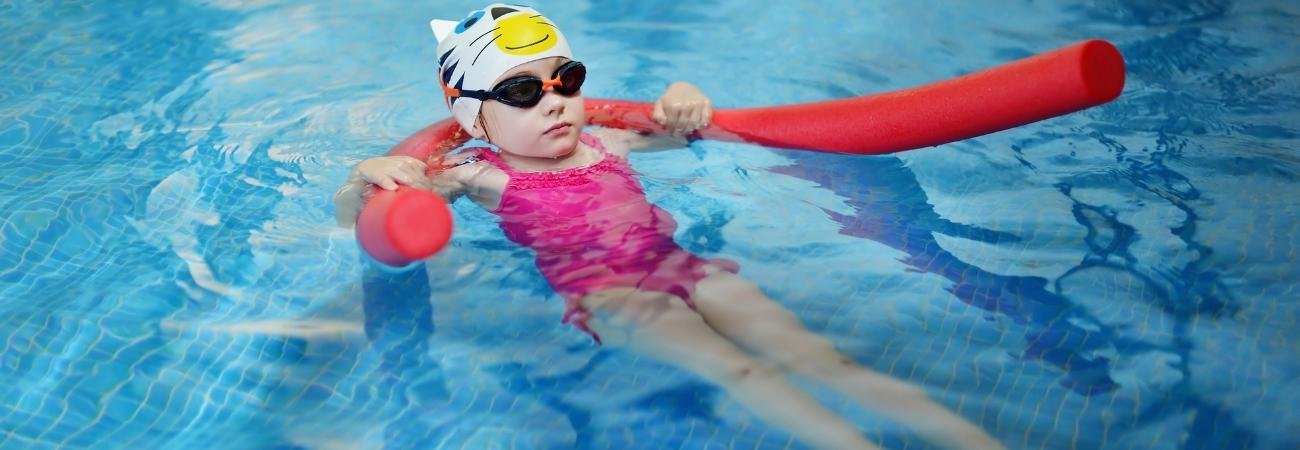
How to make this work:
Pool noodles are just what you need to create a fun obstacle course for the children. Cut them in half and hang from tree branches, attach two ends together with duct tape so they form an arch or simply lay them on the ground to jump over – the options to get creative are endless. Challenge children’s balance skills by hopping over them, crawling under, then under again with only one hand touching for safety reasons.
How does it add to their learning curve:
With this game, children can get up, walk around and stretch their muscles to help them build core muscle strength. This will be useful when they are sitting at a desk all day in school getting tasks done!
7) Take Children out for Nature walks
Nature walks are a great way to get your children outdoors, and it’s never too early for them to learn about the wonders of nature. A walk through nature is a learning experience in self-discovery as well, where children have an opportunity to explore science, geography, maths and art. Children are likely to discover something new even if they walk on the same trail.

How to make this work:
Make nature accessible to children by encouraging them to find certain types of leaves, bugs, rocks and flowers in the backyard or at a local park. Incorporating activities like leaf-hunting, bug hunting, rock picking or flower identification can make nature more fun for both you and them. Children can explore nature by collecting and identifying different types of plants or animals such as rocks, bugs and flowers.
How does it add to their learning curve:
A nature hike has many benefits, one of which is the use of all your senses. From observing wildlife to smelling fresh pine in the air and feeling a cool breeze on your skin, there’s something special about exploring outdoors that can’t be matched indoors. Children get exercise, fresh air and time for creative thinking all while exploring their environment at an easy pace.
8) Nest Investigation for children
Birds are fascinating creatures that build their nests with sprigs, leaves and grass. Your children will be captivated by this idea of how birds build their nests. The simple science activity is a great way to learn about nature, and you’ll get some amazing observations from the children as they take part.
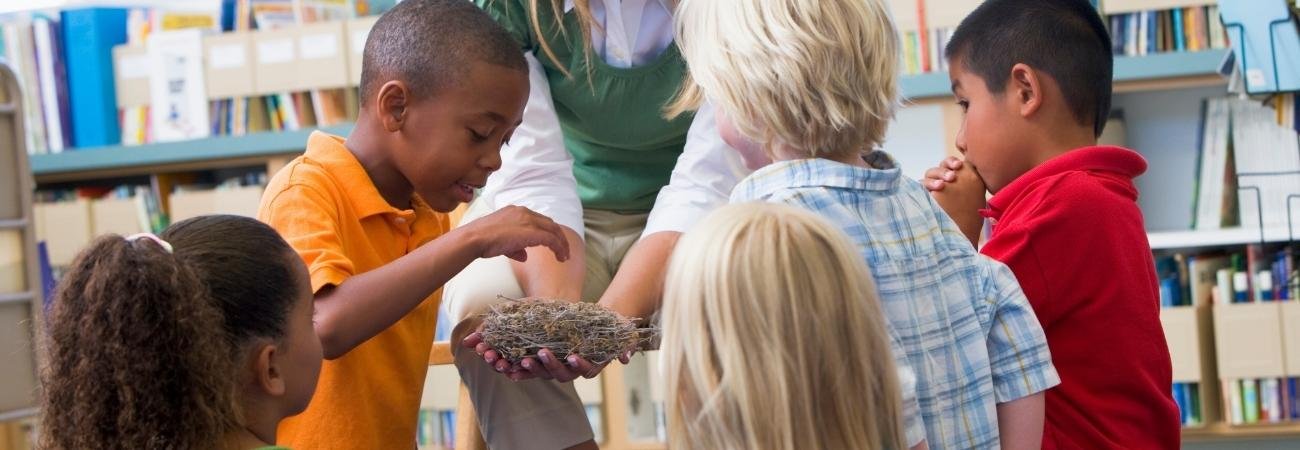
How to make this work:
You don’t have to go into the wilderness or even leave your home in order to find a bird’s nest. Birds are known for nesting on buildings and other structures, where they can easily protect their eggs from predators by building nests that hang off of window sills or ledges. Remember: Always be respectful of animal nests and do not disturb them. Imagine the amount of fun you could help children have by creating index cards full of nesting materials.
How does it add to their learning curve:
The children’s direct experience with nature piques their curiosity. Going outside with a purpose motivates them and increases their interest in the investigation into nests. Encourage them to count the number of nests found in the area or park and make sense of the mathematical idea of quantity.
9) Conduct chalk jump games
Chalk jump has long been the go-to game for children. Chalk now comes in 48 colours, and glitter too! But what hasn’t changed are all of the ways it can be used as an awesome action game for your children. Remember to always check for safety first and then find the perfect spot to chalk up some fun.
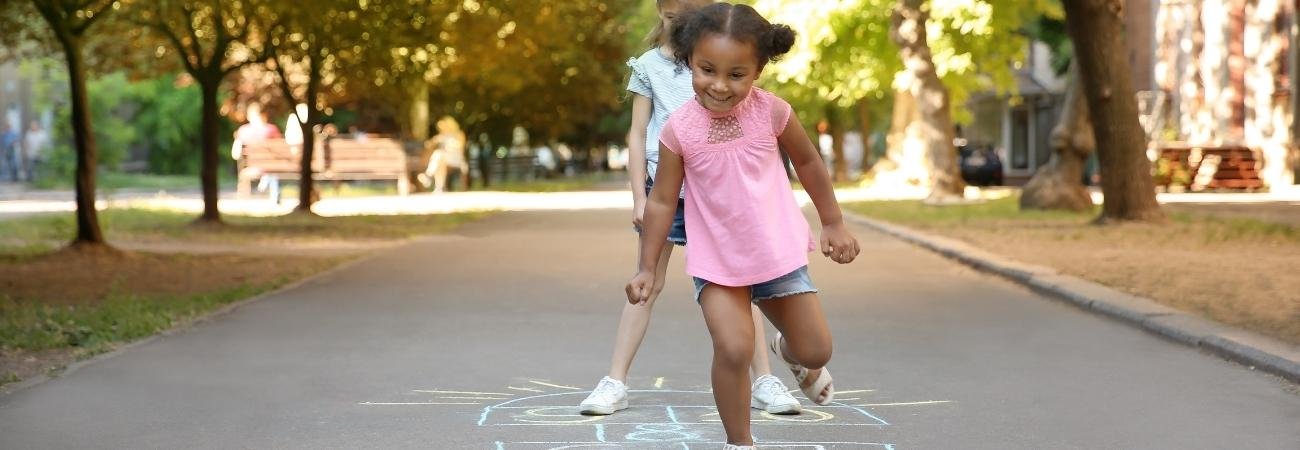
How to make this work:
Try out a chalk jump game of “Avoid the shark”. To make the task more fun, experiment with different colours of chalk to draw beaches in varying distances and have Children jump from beach to beach as they avoid sharks swimming between them. Remember to use appropriate colours, for instance, use blue chalk for water – not red or green.
How does it add to their learning curve:
Chalk-jump based outdoor activities are a fun way for children to develop gross motor skills, counting skills and letter, number and colour recognition. Use this as an opportunity to get your children outside, and help them develop their gross-motor skills while they simultaneously learn counting skills.
10) Hula hoop games for children
The hula hoop is a classic toy that has been enjoyed by children for decades. More importantly, they are inexpensive and easy to use once you get the hang of them. They’re also versatile because you can have children play with them at school, outdoors or even at events.
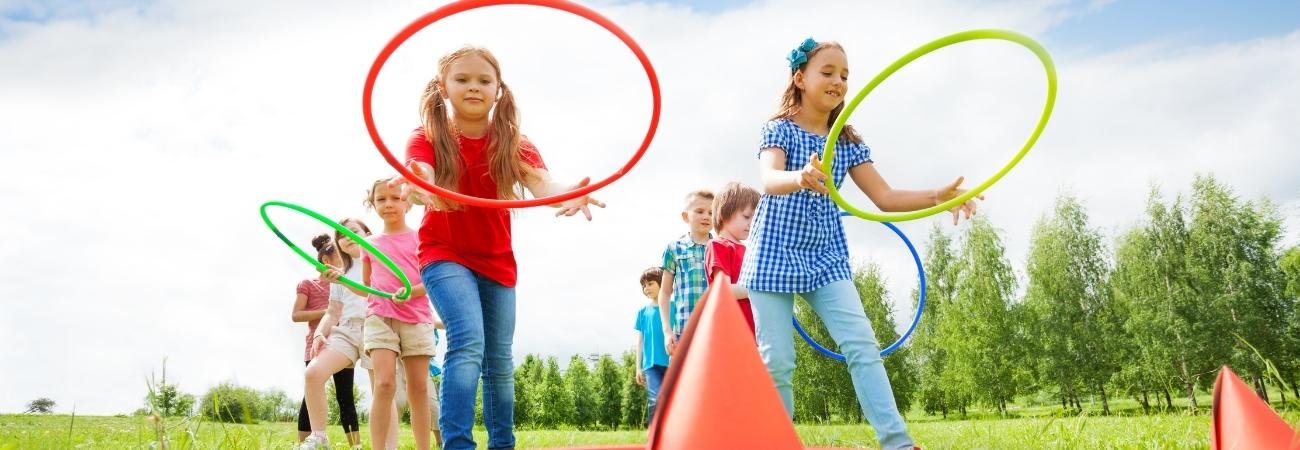
How to make this work:
To get children excited and moving, start by lining up several hula hoops. Now get each of them to hop into the hoop with both feet. Make the game more challenging by encouraging them to only use one foot in any given location before moving on to use the other foot in the next hoop. Now watch children improve their foot coordination as the game goes on.
How does it add to their learning curve:
Hula hooping is a great way to get children excited about exercise. Plus, children who play with hula hoops develop better gross-motor skills, which is important for sports and bike riding. With hula hoops, children can learn to use their bodies in new and exciting ways. The ability to coordinate muscle movements with the body is a valuable skill that will translate well for those who want to excel in sports later on.
A new trend in the world of education is teaching children the outdoors. These lessons will help them become more creative, active, and healthy all at once. Children will be learning while they play when you bring them outdoors for your next lesson. You won’t even know it, but the activities above are actually teaching skills that the children couldn’t learn inside a classroom.
Make sure to get in touch with our professionals at day nursery Sidcup and arrange a free visit for your child.

